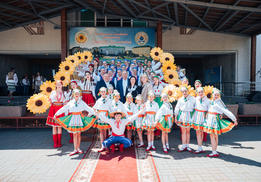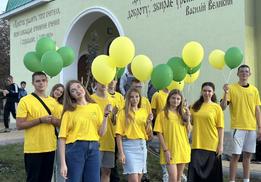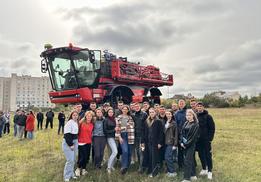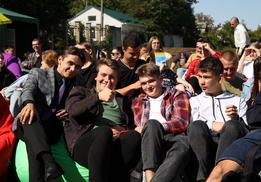Priority areas of research
Vinnytsia National Agrarian University forms the main directions of scientific and innovative activity in accordance with the Law of Ukraine No. 848 VIII "On Scientific and Scientific and Technical Activity" (as last amended on 07.03.2018), Law of Ukraine No. 5460-IV of 16.10 .2012 “On Priority Areas of Innovation Activity in Ukraine” and Resolution of the Cabinet of Ministers of Ukraine No. 980 dated 18.10.2017. “Some Issues of Determining Medium-Term Priority Areas of Innovation Activity of the National Level for 2017-2021.”
To carry out the research works the material and technical base of the agricultural research farm "Agronomichne",structural subdivisions of the Educational Research and Production Consortium, 44 laboratories, vivarium, biostationary, landfill, botanical gardens of Podillya, subordinate units of the university were used.
During 2017-2019, studies on the request of business entities for the implementation of 14 contractual and 56 initiative topics (within the framework of departmental applied research) were continued.
For the period of 2016-2017, the state budget program “Development of industrial models and justification of the working modes of heat and mass transfer equipment with vibrating intensifier of drying and extraction processes” was carried out for the amount of UAH 414,2 thousand.
Since February 2019, the University has been implementing another budgetary theme of the research and development of young scientists working (studying) in higher education institutions, scientific institutions belonging to the Ministry of Education and Science “Development the latest concept of agricultural waste for energy autonomy of agricultural enterprises” amounting to 876 thousand UAH.
According to the results of the intermediate and final stages of the research for the period 2017-2018, new technologies were created and 13 were transmitted ,actually technologies - 12, licensing agreements - 1, new techniques - 8, methods and theories - 41, international innovation measures were carried out with the involvement of the state financing - 1. 22 scientific and technical developments were introduced into the educational process and 60 into production.
405 scientific and pedagogical staff conducted scientific research on budgetary, contractual and initiative topics. 37 were doctors of sciences, professors, 227 were candidates of sciences and associate professors.
Scientific researches of the University scientists were conducted in the following directions:
Basic research:
- Plant biology and chemistry, soil, water and air (biodiversity, morphology, physiochemistry, biochemistry, genetics, biotechnology, virology, entomology, parasitology, ecology, climatology, quality and safety of plant bioresources).
- Biology of animals and microorganisms (biodiversity, morphology, physiology, biochemistry, microbiology, virology, parasitology, biotechnology, ecology, hydrobiology, climatology, quality and safety of animal bioresources).
- Chemistry and biochemistry of biologically active substances. Material Science.
- Mathematics, physics, mechanics, computer science, telecommunications, energy in sustainable use of nature.
- Humanities, socio-political, managerial, pedagogical and philological sciences (history, philosophy, sociology, cultural studies, psychology, political economy and strategic management in normal and extreme conditions and nature, society, pedagogy and problems of educational organization).
- Problems of environmental protection and improving the quality of life of people in rural areas.
- Social and economic policies in rural areas.
Applied research
- Energy and energy efficiency.
- Scientific and technical problems of research of electrotechnical and electromechanical complexes and systems.
- Scientific and technical problems of transformation of renewable kinds of energy.
- General problems of mechanics.
- Dynamics and strength of materials, joints and structures. Industry engineering.
- Finance, money circulation and credit.
- Accounting, analysis and audit.
- Enterprise economics and production management.
- Economics of activities and regulatory policy.
- Economics of environmental management and protection of the environment.
- Economics of nature management and management of the national economy.
- Earth Sciences. Constructive geography and rational use of natural resources.
- Scientific problems of agriculture, forestry and landscape gardening, veterinary medicine.
- The theory and practice of increasing the quantity and improving the quality of plant bioresources and ensuring sustainable agriculture.
- Creation and use of strains of microorganisms and viruses for the development of new biotechnologies and biological products.
- Substantiation of theoretical and practical problems of development of effective technologies of production and processing of livestock products.
- Scientific problems of food technology and industrial biotechnology.
Ensuring the commercialization of the university's scientific developments and their investment attractiveness at the regional and interregional levels, improving the involvement of the production potential of the region by transferring technologies, the developer of which is a university, is the main task of the university's innovation activity.
In accordance with this the main priorities in the innovation activity of the university are directed to the implementation of transfer of intellectual investments in order to improve the educational and scientific base of the university and to ensure high criteria for its certification.
3721







